Me 163B airfields: Brandis
Allied map
A wartime RAF/USAAF map of Brandis, home of I./JG400 until April 1945. The date of the map is unknown.

Capture
The 9th Armored Division was allocated the Leipzig and river Mulde area, and operations to capture the area started 12 April 1945. A detailed description of the operations is given in Zwischen Leipzig und der Mulde - Flugplatz Brandis 1935-1945 by Stephen Ransom from 1996 (in German). The Division was divided in three groups: Combat Command A, Combat Command B and Combat Command R.
Task Force Collins, part of Combat Command A, was assigned the route Hainichen, Otterwisch, Pomssen, Klinga, Staudnitz, Polenz, Leulitz, ending in Bennewitz. They arrived at the village of Polenz on 16 April, around 16:00, and unexpectedly found an airfield, that was not shown on their British maps. The airfield was defended lightly, but it seems the fighting was over rather quickly, with maybe 200 Germans made prisoner.
There were some 150 aircraft on the airfield, all demolished with a few exceptions. 33 Komets were counted, but interestingly also two Ju-287 prototypes, the only two built. Photos of the various wrecks are shown in several books, too many to list here.
Catherine Page-Fraley researched the wartime history of her father, Captain William E. Fraley, Jr, who was with the 60th Armored Infantry Battalion, 9th Armored Division (a full description of the units of the 9th Armored Division can be found on the Order of Battle of the US Army - WWII - ETO - 9th Armored Division page). She had four photos showing an airfield, that are shown here. The presence of a demolished Ju-287 makes the identification easy: Brandis.
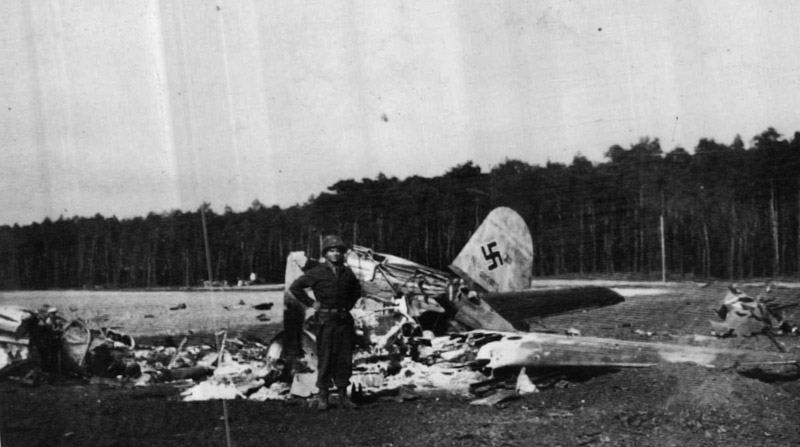
This wreck was identified as an Me 410, based on the tail surfaces and the burnt engine and prop remains.
There was one doubt: the shape of the horizontal tail tip, that is rounded on nearly all Me 410s.
But there is one wreck photo that shows the same 'square' shape. The pictured soldier is not Captain Fraley.
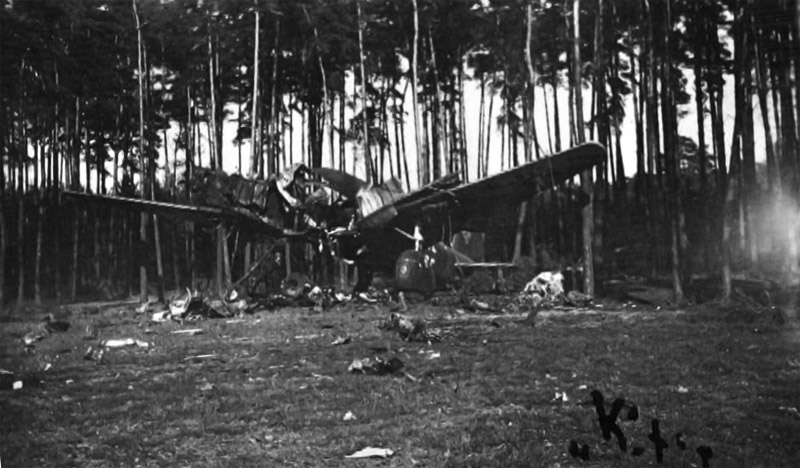
This is most likely Ju 287 V2 (RS+RB, V1 was RS+RA), of which the front fuselage was blown up. The front fuselage
appears to have been split in right and left sides, and the Jumo jet engines on the front fuselage were absent,
as are the four BMW jet engines under the wings. Noteworthy is the large wheel spat on the left-hand main landing gear. The spats on the right-hand main landing gear and
nose gear appear to be missing. That's strange, since the right-hand main landing gear spat is visible in other photos of
this wreck.
V1 was transported from the factory to Brandis in the week of 21-27 May 1944. The first flight of V1 occured on
8 August 1944 at Brandis, and 17 flights were made, presumably all at Brandis. It was then handed over to the
Rechlin test center, but probably at the same time the work was ordered to be stopped, in September
1944. V2 was probably not flown. Both aircraft remained at Brandis until the airfield was captured.
At that time, V3 and V4 were still under construction at the Junkers Dessau factory.
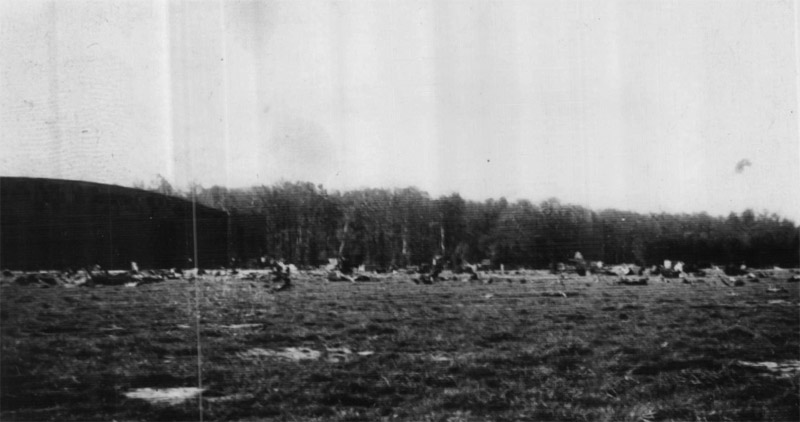
This photo probably shows some blown up Komets, in front of a hangar, that can probably be identified with more research.
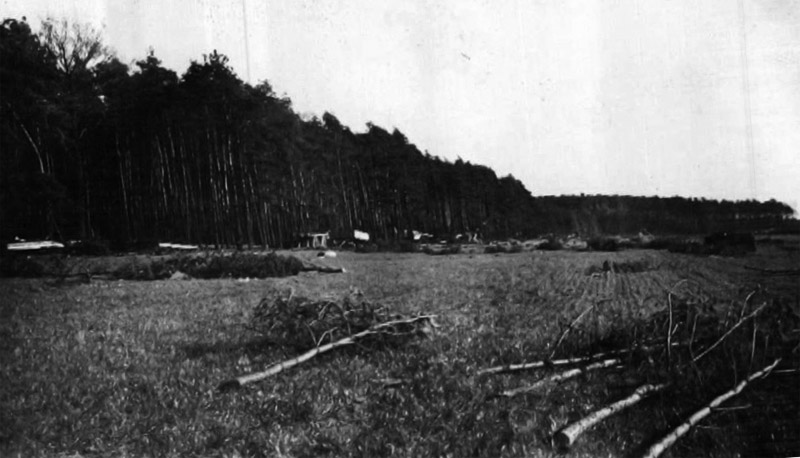
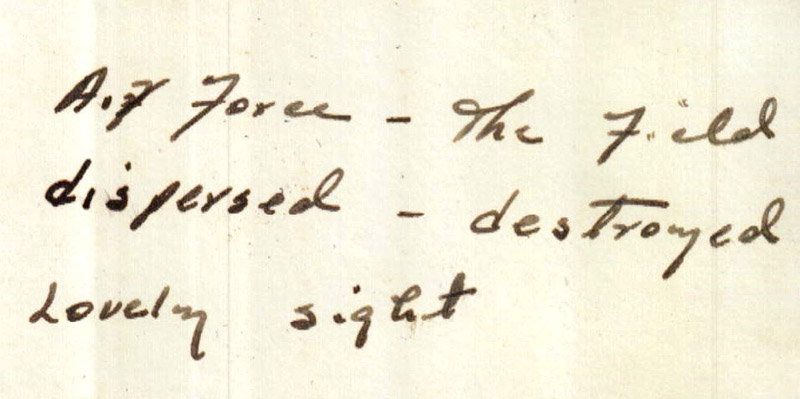
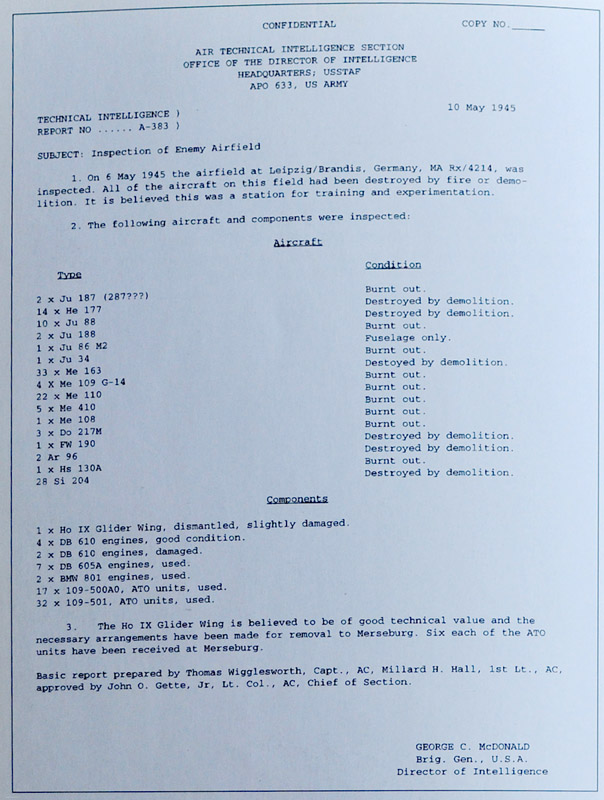
A list of all aircraft found at Brandis.
Status 1991
Thomas Genth, who works as a photo survey navigator, took some photos of Brandis in 1991. At that time, the Russian air force still used the base, with Mi8 and Mi24 helicopters visible south of runway. The revetments for the Su25 attack aircraft were in the process of being removed. Much of the taxiway structure still remains after 46 years! The same applies to the public roads outside the airbase. On his home page (via Wayback Machine from 2012), Thomas tried to keep the rememberings of his family's involvement in aviation during the periods of 1914-1918 and 1939-1945 alive, with unique photos.
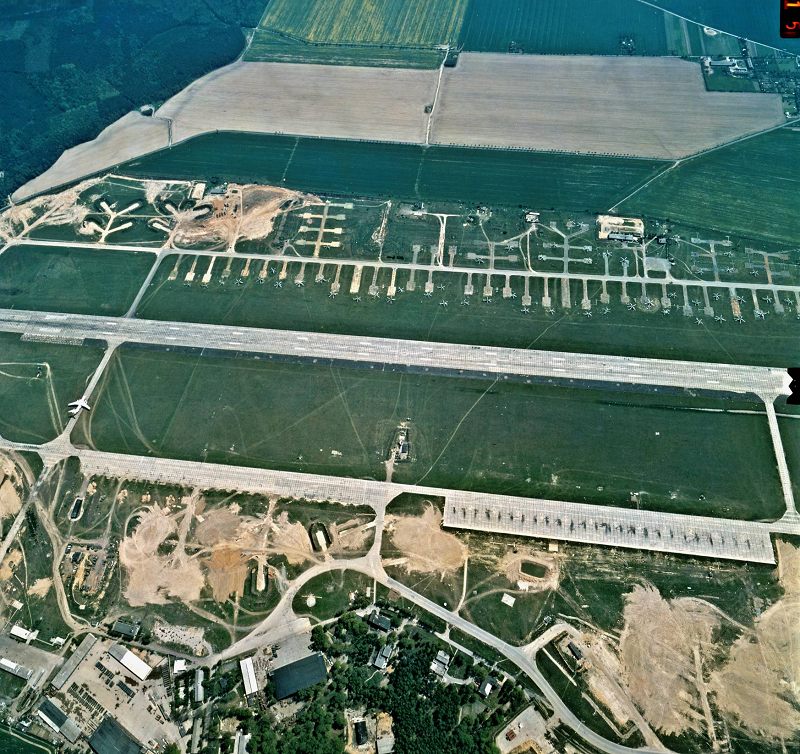
Video links
Der ehemalige Flugplatz Brandis-Waldpolenz | Drohnenrundflug
Return to Me 163B airfields page